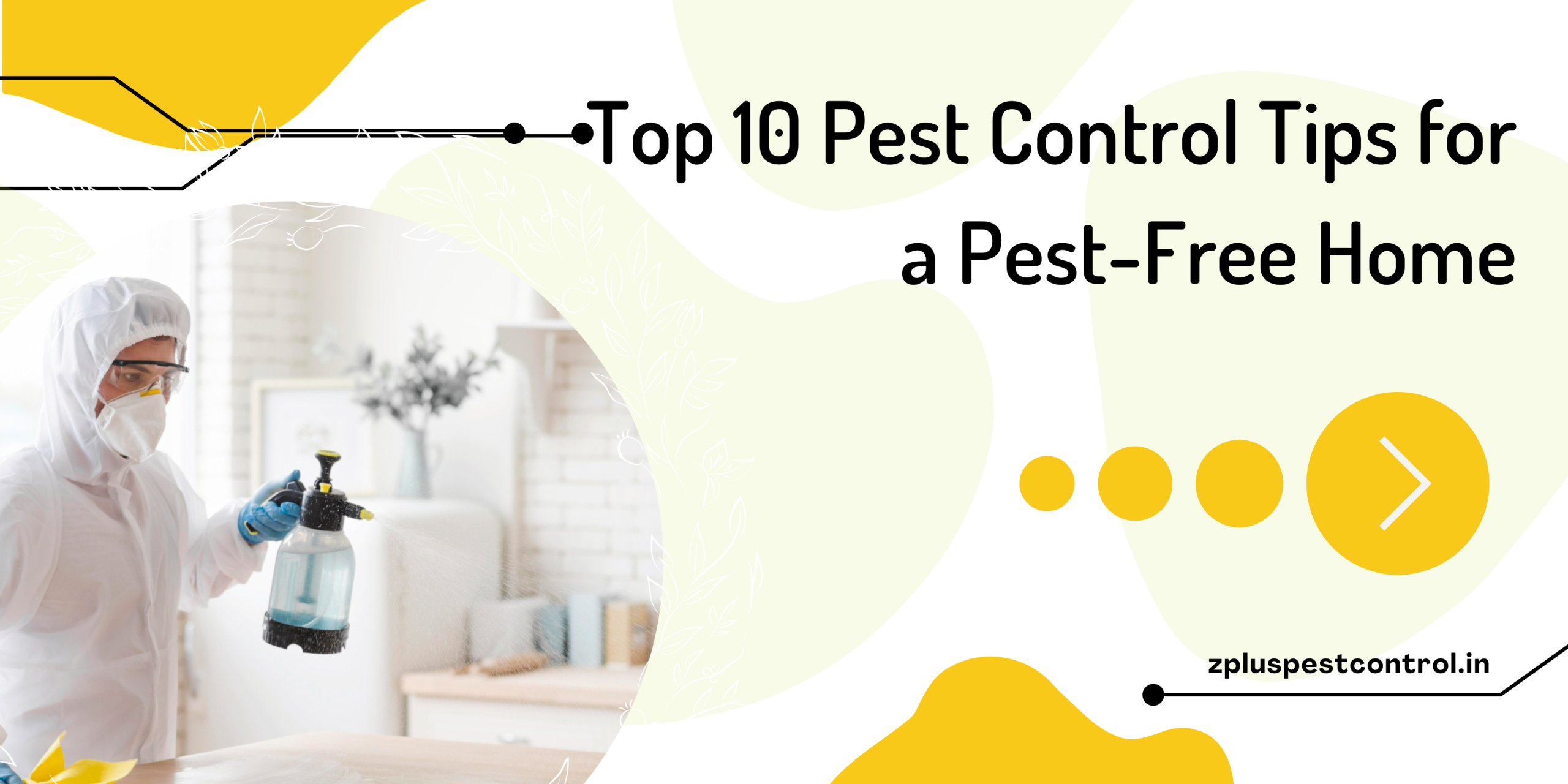Imagine waking up to the sound of scurrying feet in your walls or finding a trail of ants marching across your kitchen counter. Pests are more than just a nuisance—they can pose serious health risks, damage your property, and disrupt your peace of mind. According to the National Pest Management Association, over 14 million households in the U.S. report pest infestations each year. But the good news is that with the right strategies, you can keep your home pest-free.
In this article, we’ll explore the top 10 pest control tips to help you protect your home from unwanted invaders like ants, cockroaches, rodents, and more. These tips are practical, eco-friendly, and based on the latest pest control trends to ensure your home remains a safe haven.
Tip 1: Seal Entry Points to Prevent Pests from Entering the Home
One of the most effective ways to achieve home pest control is to stop pests before they get inside. Insects like ants and cockroaches, as well as rodents, can slip through tiny cracks and gaps. Start by inspecting your home for potential entry points. Check around windows, doors, pipes, vents, and the foundation for any openings. Use caulk to seal cracks and weatherstripping to close gaps around doors and windows. Don’t overlook damaged screens—repair or replace them to keep pests out. By sealing these entry points, you create a strong barrier that makes it tough for pests to invade.
Tip 2: Keep the Home Clean and Clutter-Free to Reduce Pest Habitats
A clean home is a pest-free home. Pests thrive where they can find food, water, and shelter, so eliminating these attractants is key. Vacuum floors regularly, wipe down countertops, and take out the trash daily to remove crumbs and spills that draw pests like ants and roaches. Focus on the kitchen and dining areas, as these are pest hotspots. Clutter also provides hiding spots for pests like spiders and mice, so declutter storage areas, basements, and garages. Organize boxes and get rid of unnecessary items to reduce pest habitats and maintain a tidy, pest-resistant space.
Tip 3: Store Food Properly to Avoid Attracting Pests
Food is a magnet for pests, especially pantry invaders like ants, cockroaches, and rodents. To prevent this, store all food—including pantry staples like flour, sugar, and cereals—in airtight containers made of glass or metal. Don’t leave pet food out overnight, and clean up bowls after feeding. Avoid leaving snacks or dirty dishes on countertops, as even small traces of food can attract pests. Store leftovers in the fridge promptly after meals. Proper food storage is a simple yet powerful step in pest prevention that keeps your kitchen pest-free.
Tip 4: Use Natural Pest Control Methods
For those who prefer natural pest control, there are plenty of eco-friendly options that work wonders. Essential oils like peppermint, eucalyptus, and tea tree oil repel insects such as ants, mosquitoes, and spiders. Mix 10-15 drops with water in a spray bottle and apply to entry points or problem areas. Another great option is diatomaceous earth, a non-toxic powder that kills pests like bed bugs and cockroaches by dehydrating them—sprinkle it in cracks or along baseboards. For rodents, try humane traps or ultrasonic repellents. These methods are safe for your family and pets while keeping pests at bay.
Tip 5: Regularly Inspect the Home for Signs of Pests
Catching a pest problem early can save you from a major infestation. Make it a routine to inspect your home for signs of pests. Look for droppings (tiny black pellets from rodents), gnaw marks, nests, or damaged food packaging. Check hidden areas like the attic, basement, and behind appliances where pests often lurk. If you notice anything suspicious, act quickly—whether it’s setting traps or calling a professional. Regular inspections are a proactive way to stay ahead of pests and ensure your home remains a pest-free zone.
Tip 6: Use Traps or Baits to Catch and Eliminate Pests
When pests sneak inside, traps and baits can help you take back control. Sticky traps are perfect for capturing crawling insects like spiders and cockroaches—place them in corners or along walls. For rodents, snap traps or live traps work well; position them near entry points or where you’ve seen activity. Bait stations are another option, luring pests with poison they carry back to their nests. Check traps regularly and replace them as needed. This hands-on approach is a practical way to tackle small infestations before they grow.
Tip 7: Hire a Professional Pest Control Service for Severe Infestations
Sometimes, DIY methods aren’t enough, especially with stubborn pests like termites or bed bugs. That’s when a professional pest control service comes in handy. Experts have the tools, knowledge, and treatments to handle severe infestations effectively. They can also offer preventative plans to stop pests from returning. When choosing a service, opt for one that uses eco-friendly methods and has good reviews. Yes, it’s an investment, but it’s worth it to protect your home from costly damage and health risks caused by persistent pests.
Tip 8: Maintain a Healthy Lawn and Garden to Prevent Outdoor Pests
Pests often start outside before moving indoors, so a well-kept yard is essential for pest control. Trim overgrown bushes and trees to remove hiding spots for rodents and insects. Clear standing water from gutters, birdbaths, and flowerpots to stop mosquitoes from breeding. Add pest-repelling plants like marigolds, lavender, or basil around your home’s perimeter for an extra layer of protection. Regular lawn mowing and debris removal also discourage outdoor pests. A healthy garden not only looks good but also keeps pests from crossing into your living space.
Tip 9: Educate Family Members About Pest Control and Prevention
Pest control works best when everyone pitches in. Talk to your family about why it matters and how they can help. Teach kids to clean up spills, store snacks properly, and tell you if they see pests. Remind everyone to close doors and windows quickly to block entry points. Simple habits—like not leaving food out or piling up clutter—can make a big difference. When the whole household is informed and involved, you create a united front against pests, keeping your home safer and cleaner.
Tip 10: Stay Informed About the Latest Pest Control Trends and Technologies
Pest control is always advancing, and staying updated can give you an edge. Follow trusted pest control blogs or consult local experts to learn about new methods. For instance, Integrated Pest Management (IPM) combines prevention, monitoring, and treatment for sustainable results. Smart home gadgets, like automated pest detectors, are also gaining traction in 2025. These tools alert you to pest activity in real time. By keeping up with trends, you can adopt cutting-edge solutions that make pest control easier and more effective for your home.
Conclusion
A pest-free home is within your reach with these 10 expert tips. From sealing entry points to staying informed about the latest pest control innovations, each step builds a stronger defense against unwanted guests. Start small—clean up, store food properly, and inspect regularly—then scale up with traps or professional help if needed. Your home should be a place of comfort, not a playground for pests. Have a tip that works for you? Drop it in the comments below—we’d love to hear from you! Let’s keep our homes pest-free together. Google pest control near me
Author
-

With 10+ years of experience in the pest control industry, Rajat is the co-founder of Zplus Pest Control. He shares reliable, real-world advice on pest prevention and treatment through his expert blogs, helping readers stay informed and pest-free.
Co-Founder & Certified Pest Control Expert at Zplus Pest Control

